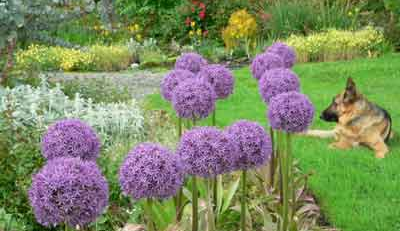Alocasia Odora: The Ultimate Guide
Introduction
Alocasia odora, commonly known as the Night-Scented Lily or Giant Elephant Ear, is a captivating tropical plant celebrated for its large, lush leaves and exotic appeal. Native to Southeast Asia and Eastern Australia, this plant thrives in warm, humid environments, making it a popular choice for gardens, water features, and indoor collections. Its glossy, heart-shaped leaves can grow up to three feet long, creating a bold, dramatic presence in any space. In addition to its visual allure, Alocasia odora is valued for its low maintenance needs and adaptability, making it an excellent option for both novice and experienced gardeners.
This guide will walk you through everything you need to know about growing, caring for, and showcasing this beauty in your home or garden.

Plant Profile
Specifications:
- Botanical Name: Alocasia odora
- Common Names: Night-Scented Lily, Giant Elephant Ear
- Plant Type: Perennial herbaceous plant
- Mature Size: 4–8 feet tall, 3–6 feet wide
- Sun Requirements: Partial shade to bright, indirect light
- Soil Type: Well-draining, nutrient-rich soil
- Soil pH: Slightly acidic to neutral (5.5–7.0)
- Water Requirements: Moderate; prefers consistently moist soil
- Hardiness Zones: USDA zones 8–11
Why Grow Alocasia Odora?
Alocasia odora offers a range of benefits that make it a favorite among gardeners and plant enthusiasts. Its large, dramatic leaves instantly transform any space into a tropical retreat, while its adaptability allows it to thrive in a variety of environments. Furthermore, the plant’s night-scented blooms emit a subtle, sweet fragrance, adding sensory appeal to gardens and indoor collections. Additionally, Alocasia odora improves air quality by filtering toxins and increasing humidity, making it a functional and beautiful addition to homes and offices.
Types of Alocasia Odora
While the standard Alocasia odora is widely cultivated, there are several notable varieties and cultivars, each offering unique features:
- Alocasia odora ‘Variegata’: Known for its striking white and green variegated leaves, this variety adds visual interest to any garden.
- Alocasia odora ‘California’: A more compact variety with smaller leaves, perfect for container gardening or smaller spaces.
- Alocasia odora ‘Purple Stem’: Distinguished by its deep purple stems, adding a pop of color to the plant’s overall appearance.
These varieties allow gardeners to select the perfect type of Alocasia odora to suit their aesthetic and functional needs.
Where Is Alocasia Odora Grown?
Alocasia odora flourishes in tropical and subtropical climates, thriving in regions with consistently warm temperatures and high humidity. Native to Southeast Asia and Eastern Australia, this plant grows naturally in lush rainforests and along riverbanks, where it benefits from ample moisture, dappled sunlight, and nutrient-rich soils. Its ability to adapt to diverse environments has made it a popular choice for gardens and landscapes worldwide.
In the United States, Alocasia is a common feature in USDA zones 8–11, where the mild winters and long growing seasons of states like Florida, Texas, and California provide ideal conditions for its growth. Gardeners in these regions often plant it in garden beds or near water features, where its large, dramatic foliage creates a striking focal point.
For those living in cooler climates, Alocasia odora can be successfully grown in containers, making it accessible to gardeners outside its natural growing zones. Container planting allows for easy relocation indoors during colder months, where the plant can continue to thrive in a controlled environment with adequate humidity and bright, indirect light. This adaptability ensures that the plant remains healthy year-round, regardless of geographic location, and allows plant enthusiasts from various regions to enjoy its lush, tropical beauty.
Furthermore, its use in public spaces, parks, and resorts in tropical and subtropical areas has contributed to its reputation as an iconic ornamental plant. Whether as part of a garden landscape, a patio accent, or an indoor collection, Alocasia odora’s ability to adapt and thrive in diverse climates underscores its appeal and versatility.
How to Grow Alocasia Odora
Step 1: Choose the Right Location
Select a location with partial shade or bright, indirect light to prevent leaf scorching. Outdoor plants benefit from protection against harsh afternoon sun, while indoor plants thrive near east- or north-facing windows.
Step 2: Prepare the Soil
Alocasia odora prefers well-draining, nutrient-rich soil. Enrich the planting site with organic matter such as compost or aged manure to improve fertility and drainage. For additional soil tips, explore our guide on how to grow basil in a pot.
Step 3: Planting
Dig a hole twice the width of the plant’s root ball. Place the plant in the hole, ensuring the crown is level with the soil surface. Backfill with soil, tamp gently, and water thoroughly to settle the roots.
Step 4: Watering and Mulching
Keep the soil consistently moist but not waterlogged. Apply a layer of mulch around the base to retain moisture, regulate soil temperature, and suppress weeds.
Step 5: Fertilizing
Feed Alocasia odora every 6–8 weeks during the growing season with a balanced fertilizer to support its lush foliage. Organic options like compost tea or fish emulsion are also effective.
Growing Alocasia Odora in Containers
Container gardening is an excellent option for Alocasia odora, particularly in cooler climates or small spaces. Choose a large pot with drainage holes to accommodate the plant’s extensive root system. Use a well-draining potting mix, such as a blend of peat moss, perlite, and compost. Position the container in a location with bright, indirect light and water regularly to keep the soil moist.
Repot the plant every 2–3 years to refresh the soil and provide room for growth. Container-grown ordoras adds a tropical touch to patios, balconies, and indoor spaces, combining beauty and practicality.
How to Propagate Alocasia Odora
Propagation of Alocasia odora is typically done through division:
- Carefully remove the plant from its container or garden bed during the growing season.
- Gently separate the rhizomes, ensuring each division has healthy roots and at least one growth point.
- Plant the divisions in fresh, well-draining soil and water thoroughly to help them establish.
Propagation by division is an effective way to expand your collection or share this stunning plant with fellow gardeners.
Caring for Alocasia Odora
Caring for Alocasia odora involves meeting its specific needs for watering, feeding, and maintenance:
- Watering: Keep the soil consistently moist but avoid overwatering, which can lead to root rot. During dry spells, increase watering frequency to prevent stress.
- Pruning: Remove yellowing or damaged leaves to maintain the plant’s appearance and redirect energy to healthy growth.
- Humidity: Maintain high humidity levels, especially for indoor plants, by misting the leaves regularly or using a humidifier.
- Pest Control: Monitor for common pests like spider mites and aphids. Treat infestations promptly with neem oil or insecticidal soap.
Benefits of Growing Alocasia Odora
Growing Alocasia odora offers numerous advantages that extend beyond its striking visual appeal, making it a standout addition to gardens and homes alike:
- Aesthetic Appeal: The large, glossy, heart-shaped leaves of plant create a dramatic, tropical ambiance, instantly transforming any indoor or outdoor space into a lush retreat. Its bold presence makes it a stunning centerpiece in garden beds, patio arrangements, or interior plant displays.
- Air Purification: Alocasia odora contributes to healthier indoor environments by filtering toxins and releasing oxygen, enhancing air quality. Its ability to increase humidity also makes it an excellent choice for homes and offices, particularly in dry climates or during the winter months when heating systems reduce indoor moisture levels.
- Erosion Control: When planted outdoors, Alocasia odora’s extensive root system stabilizes soil on slopes and in areas prone to erosion. By reducing water runoff and binding the soil, this plant serves a practical role in maintaining landscape integrity while adding beauty to the environment.
- Wildlife Habitat: The dense, lush foliage of Alocasia odora provides a safe haven for small wildlife, such as birds and beneficial insects, contributing to a thriving garden ecosystem. It’s particularly valuable for creating biodiversity-friendly landscapes that support pollinators and other creatures.
- Versatility: Alocasia odora’s adaptability makes it suitable for a wide range of environments. It thrives in shaded garden beds, sunny patios, and bright indoor spaces, making it easy to incorporate into any setting. Whether used as an ornamental plant, a privacy screen, or a companion for water features, its versatility ensures it fits seamlessly into various design styles and functional needs.
With its unique combination of aesthetic, environmental, and practical benefits, Alocasia odora remains a favorite among gardeners and plant enthusiasts seeking to elevate their spaces.
Cultural and Ornamental Uses
In its native regions, Alocasia odora holds cultural significance and practical uses. Traditionally, the plant’s leaves have been used for wrapping food or as makeshift umbrellas. Its elegant foliage makes it a popular ornamental plant in tropical-themed gardens, water features, and public spaces. The plant’s ability to thrive in diverse settings ensures it remains a favorite for gardeners and landscapers worldwide.
Fun Facts
- Alocasia odora is sometimes called “Night-Scented Lily” because its flowers emit a sweet fragrance during the evening.
- It is one of the few plants that can grow up to 8 feet tall indoors with the right care.
- In traditional medicine, parts of the plant have been used for treating skin conditions and inflammation, though it should never be ingested raw due to its toxicity.
Conclusion
Alocasia odora is a breathtaking plant that combines tropical beauty with practical benefits, making it a valuable addition to any garden or indoor collection. Its dramatic foliage, adaptability, and air-purifying qualities ensure it remains a favorite among plant enthusiasts. By following proper care and cultivation practices, you can enjoy the bold presence of this plant year-round.
For more gardening inspiration, explore our guides on how to prune roses in fall, snap peas, and cauliflower companion plants. With dedication and attention, Alocasia odora will thrive, transforming your space into a lush, tropical paradise.













Leave a Reply